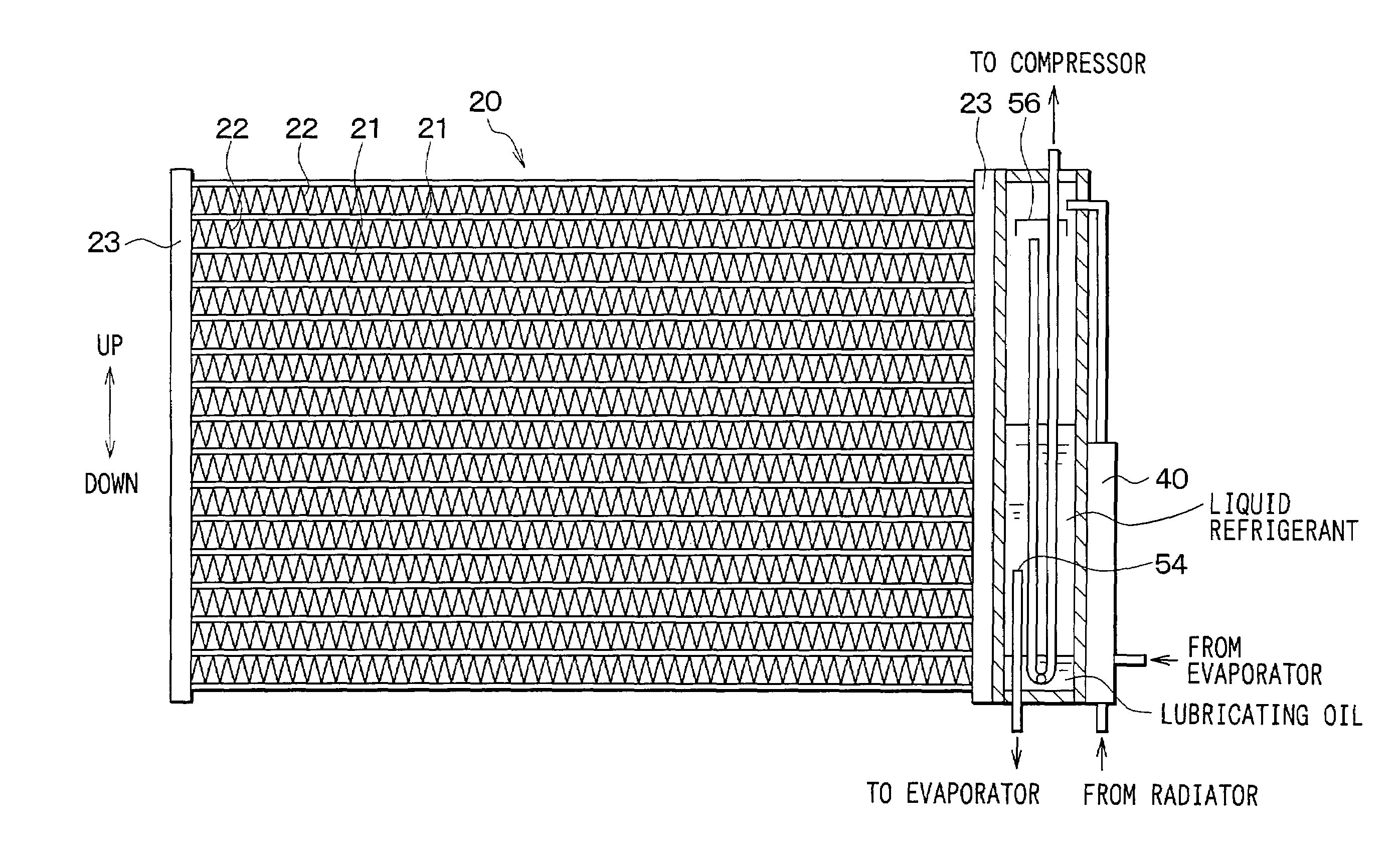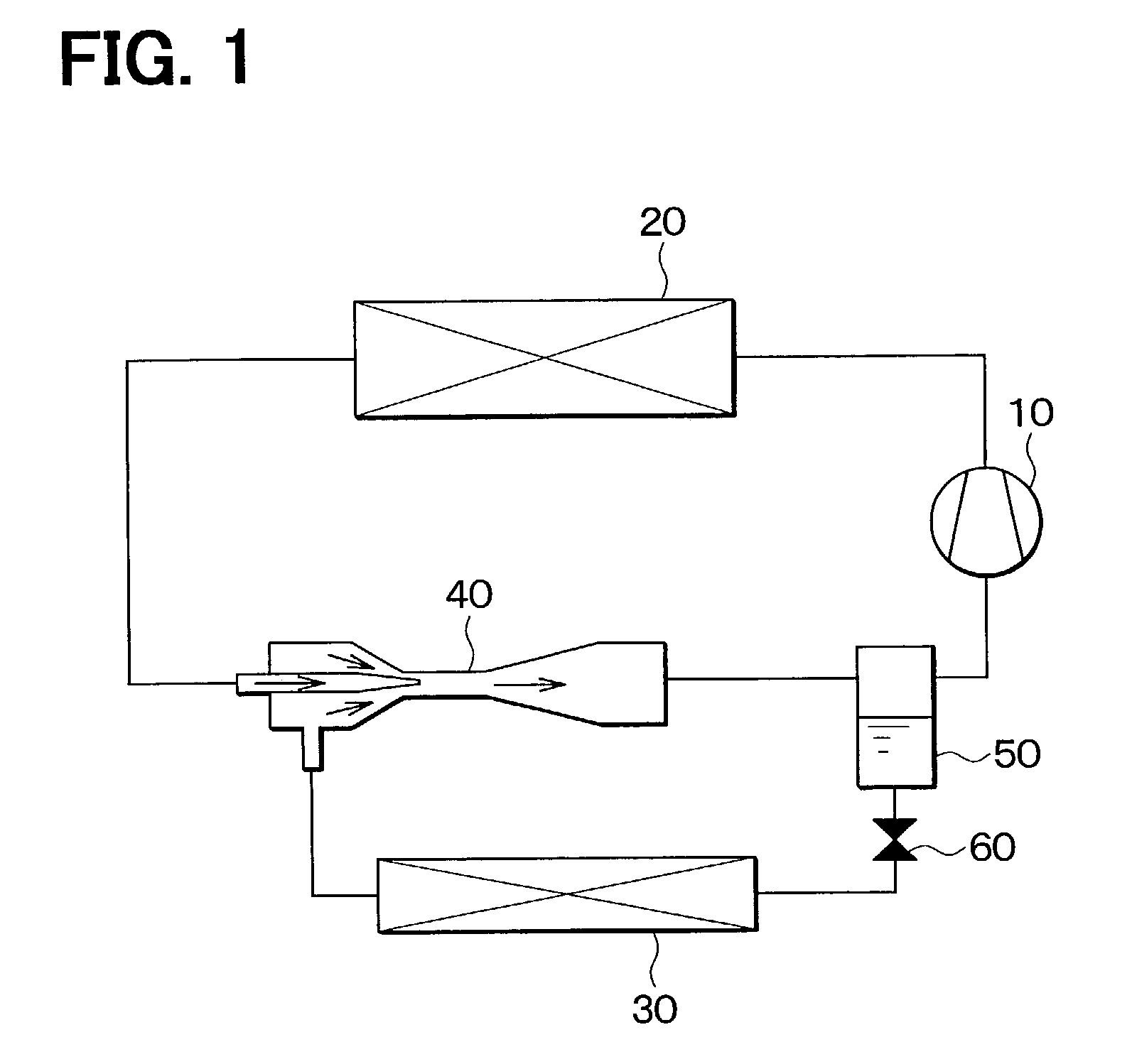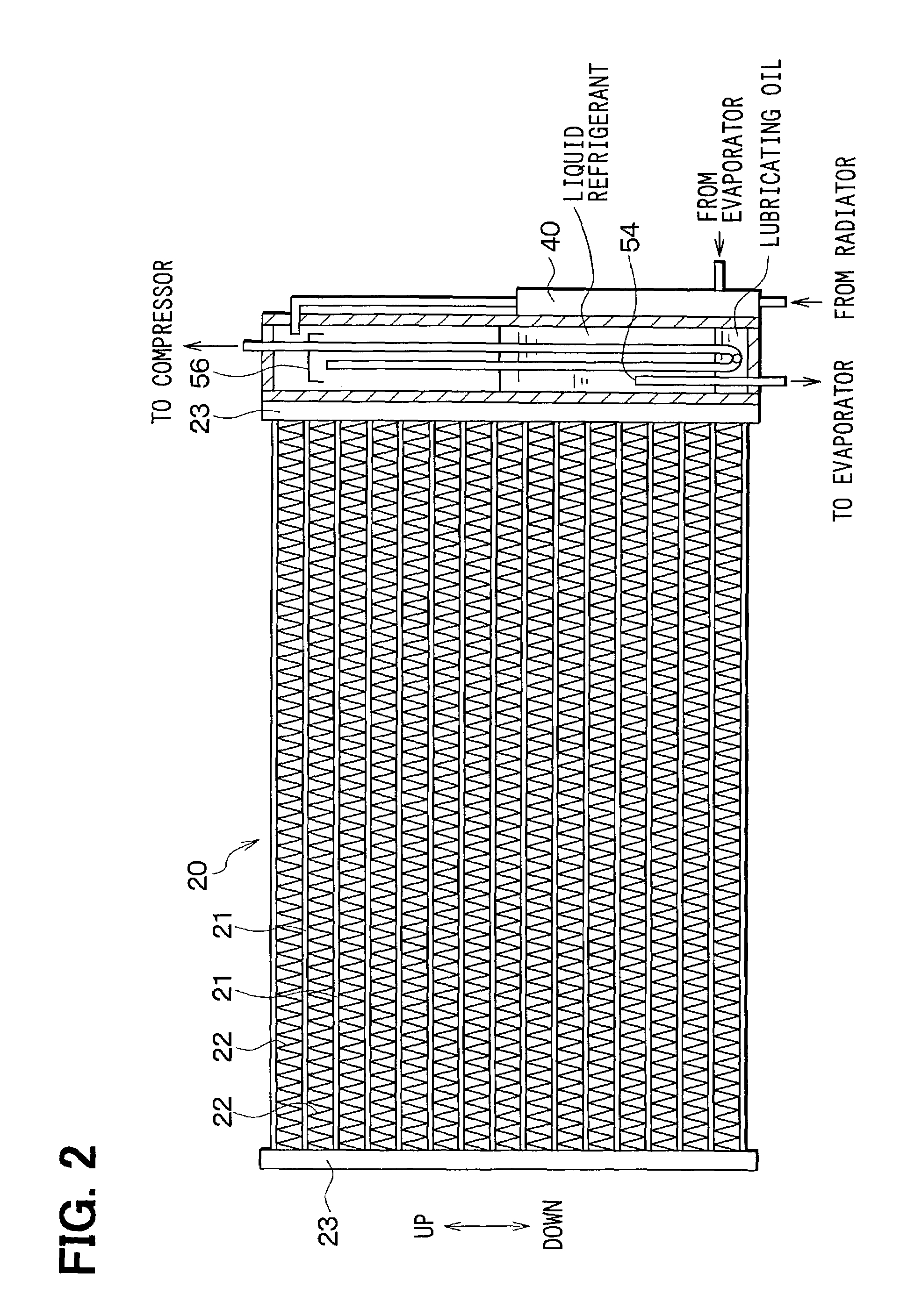Gas-liquid separator and ejector refrigerant cycle using the same
a technology of gas-liquid separator and refrigerant cycle, which is applied in the direction of refrigeration components, transportation and packaging, lighting and heating equipment, etc., can solve the problems of increased production cost, increased weight and size of gas-liquid separator, etc., and achieve the effect of reducing weight and siz
- Summary
- Abstract
- Description
- Claims
- Application Information
AI Technical Summary
Benefits of technology
Problems solved by technology
Method used
Image
Examples
first embodiment
(First Embodiment)
[0024]In the first embodiment, as shown in FIG. 1, an ejector refrigerant cycle of the present invention is typically used for a vehicle air conditioner. A compressor 10 is a variable displacement compressor for sucking and compressing refrigerant by using motive power from a vehicle engine. A radiator 20 is a high-pressure heat exchanger, and radiates heat of refrigerant by performing heat exchange between outside air and refrigerant discharged from the compressor 10. In the first embodiment, although carbon dioxide is typically used as the refrigerant, fleon (e.g., R404, R134a) can be used as the refrigerant. When fleon is used as the refrigerant, refrigerant is condensed in the radiator 20. However, when carbon dioxide is used as the refrigerant, refrigerant pressure at a high pressure side is equal to or higher than the critical pressure of the refrigerant. Therefore, when carbon dioxide is used as the refrigerant, the refrigerant is not condensed in the radiat...
second embodiment
(Second Embodiment)
[0043]In the second embodiment, as shown in FIGS. 6A, 6B, a container for containing the ejector 40 is molded integrally with the tank body 51 by extrusion or drawing, so that at least a part of the ejector 40 is integrated to the gas-liquid separator 50. In the second embodiment, the nozzle, the mixing portion and the diffuser of the ejector 40 are arranged in a direction parallel to the longitudinal direction of the tank body 51. Therefore, the gas-liquid separator 50 and the ejector 40 can be readily integrated to each other. In the second embodiment, the other parts are similar to those of the above-described first embodiment, and the advantage described in the first embodiment can be obtained.
third embodiment
(Third Embodiment)
[0044]The third embodiment is a modification of the second embodiment. As shown in FIGS. 7A, 7B, pipes for connecting the ejector 40 and the gas-liquid separator 50 or a part of the container for containing the ejector are molded integrally with the tank body 51 by extrusion or drawing, so that at least a part of the ejector 40 is integrated to the gas-liquid separator 50. In the third embodiment, the other parts are similar to those of the above-described second embodiment.
PUM
 Login to View More
Login to View More Abstract
Description
Claims
Application Information
 Login to View More
Login to View More - R&D
- Intellectual Property
- Life Sciences
- Materials
- Tech Scout
- Unparalleled Data Quality
- Higher Quality Content
- 60% Fewer Hallucinations
Browse by: Latest US Patents, China's latest patents, Technical Efficacy Thesaurus, Application Domain, Technology Topic, Popular Technical Reports.
© 2025 PatSnap. All rights reserved.Legal|Privacy policy|Modern Slavery Act Transparency Statement|Sitemap|About US| Contact US: help@patsnap.com



